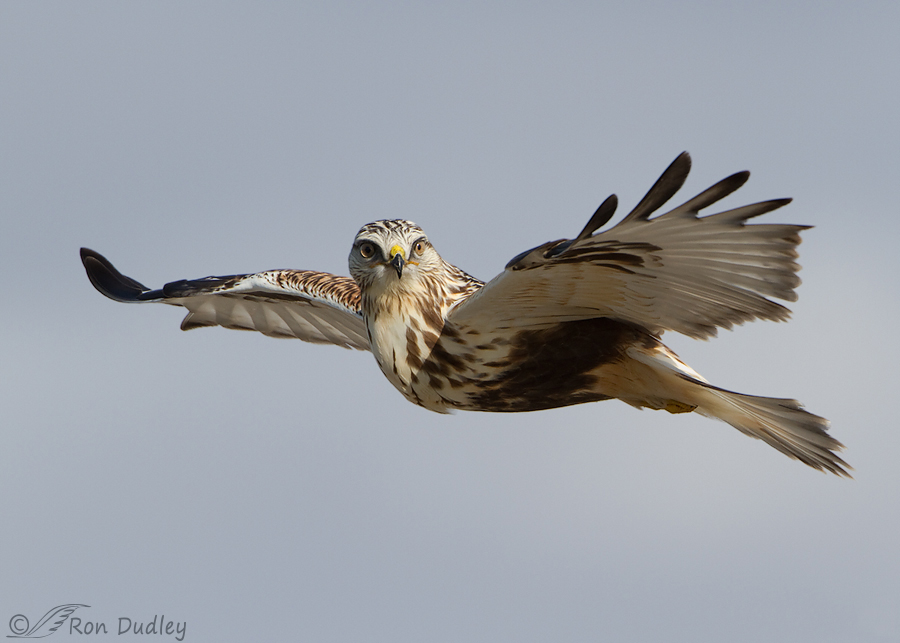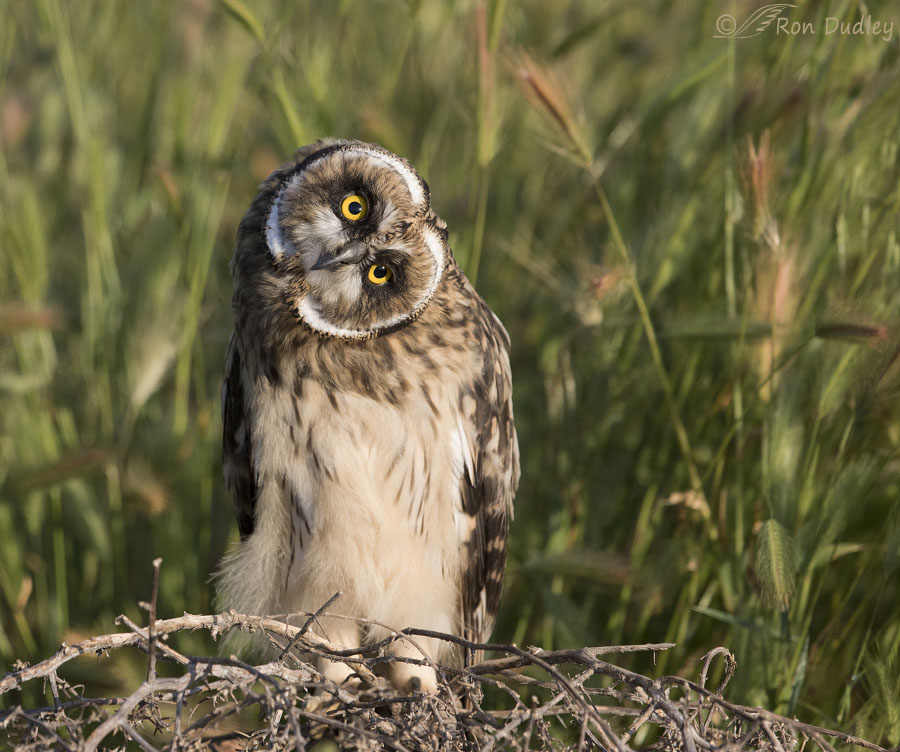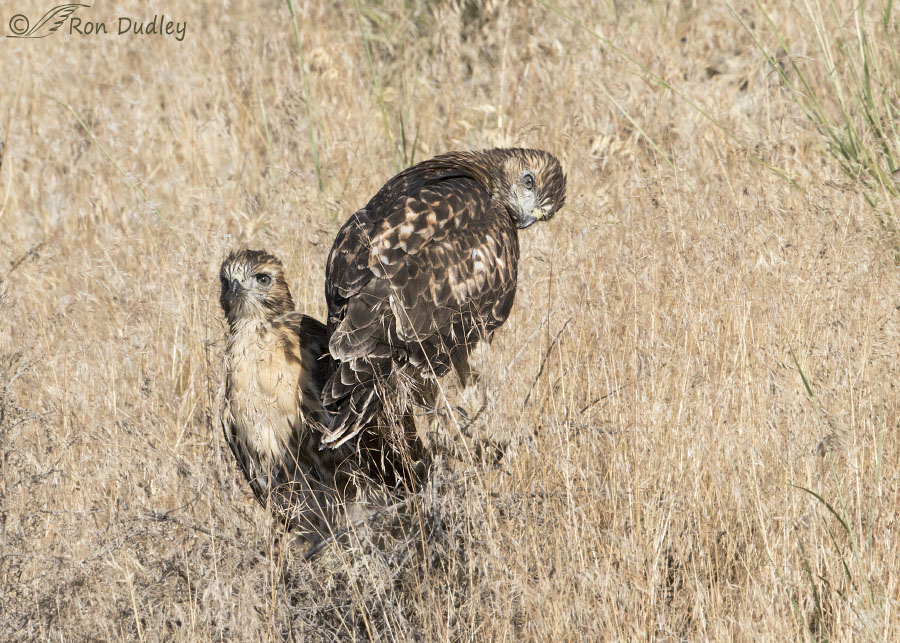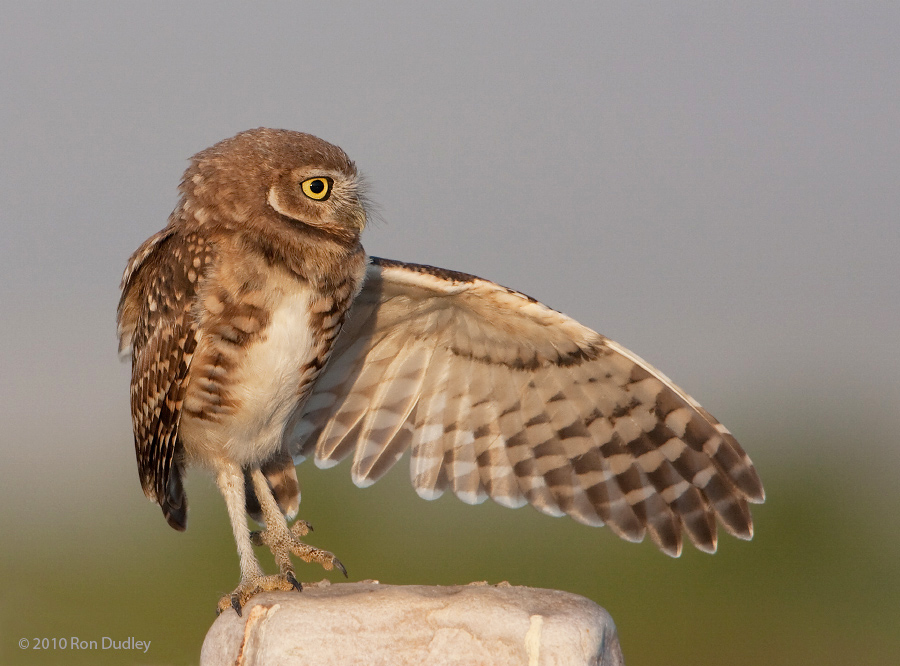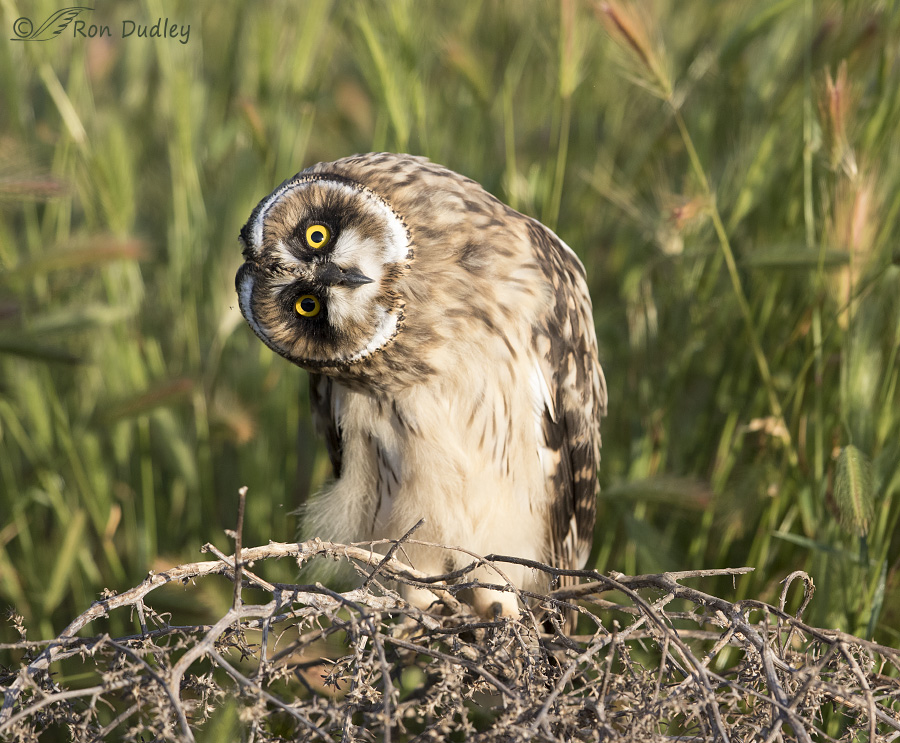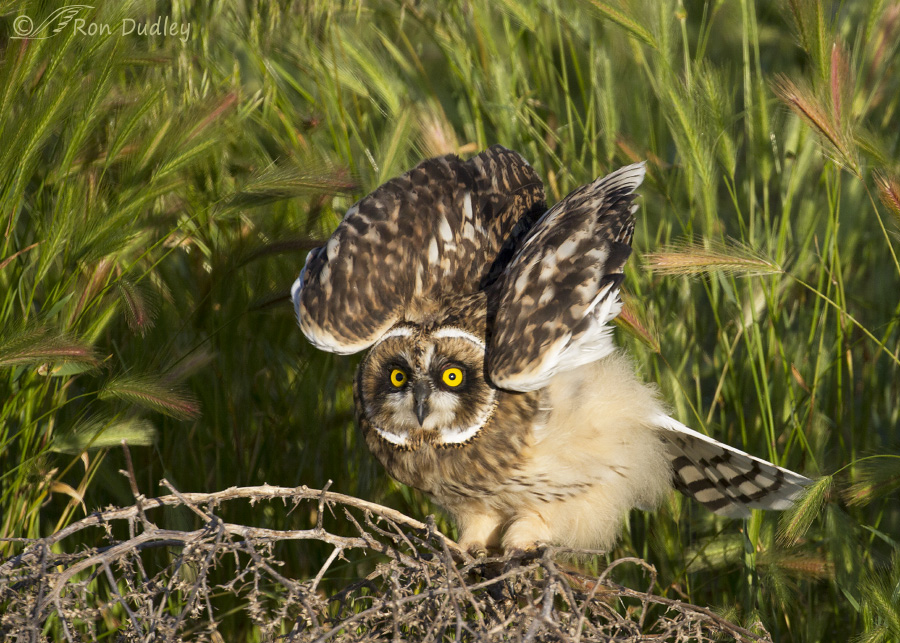Tag: parallax
Sibling Short-eared Owl Chicks
Sibling Red-tailed Hawk Fledglings In Different Curiosity Poses
Juvenile Burrowing Owls – The Clowns Of The Bird World
Fledgling Short Eared Owl Siblings
Two Young Short-eared Owl Siblings
Short-eared Owl Siblings Parallaxing (and an update on the owl hung up on barbed wire)
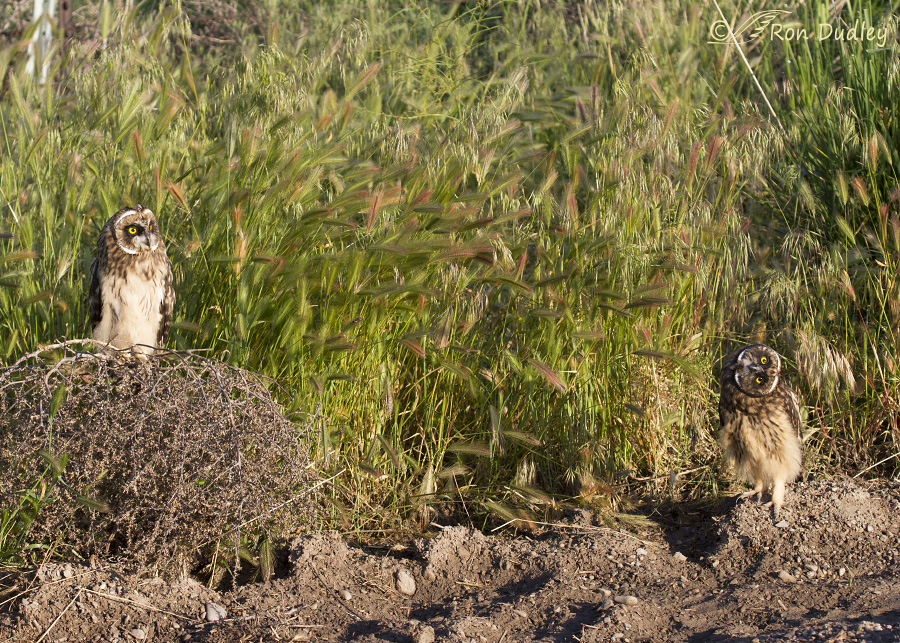
Normally it’s my practice to avoid posting the same species two days in a row. But in celebration of the (unexpected) good news about the juvenile Short-eared Owl we rescued from barbed wire two days ago I decided to make an exception. After all, I think we all prefer our owls happy and acting normally rather than hanging from barbed wire and in despair.
Burrowing Owl Youngsters – Hams Of The Bird World
Prepare to lose your heart if you ever have the opportunity to photograph or watch juvenile Burrowing Owls up close. They’re full of spontaneous antics and personality and they’re cute as a button.
Juvenile Burrowing Owl Parallaxing
Parallax is the effect where the position or direction of an object appears to differ when viewed from different positions. When an observer moves, the apparent relative motion of several stationary objects against a background gives hints about their relative distance which the brain can interpret to provide absolute depth information. As you can imagine this can be very helpful to birds for flight and for judging prey position. The movement required comes automatically during flight but it can also be provided while perched by exaggerated movements of the head in all three dimensions. Tipping the head also provides cues by changing the relative position of the eyes to the object being viewed. Learning to interpret this information takes practice so many juvenile birds do just that, owls in particular. Techs for the following images – most were taken at 1/640 or 1/800, f/9, ISO 400, 500 f/4, 1.4 tc, natural light, not baited, set up or called in. All images presented in the order they were taken. Several years ago I spent a lot of time over several weeks photographing a family of Burrowing Owls along the causeway to Antelope Island. Their burrow was very close to the road and they became almost completely acclimated to traffic so I was able to observe and photograph many interesting behaviors of both juveniles and adults from my pickup. Here, this juvenile is simply ignoring me (for the sake of convenience I’ll refer to this bird as a male though I have no idea what sex it…
Burrowing Owls of Antelope Island
I simply adore watching and photographing Burrowing Owls. They show more personality and cute little quirks than any other avian species I’ve photographed – especially the juveniles. There are usually three problems with shooting these birds though – finding them in the first place, getting close enough to them for high quality photographs without disturbing their normal activities or making them nervous and catching them out in the open or on an elevated perch so that the vegetation that usually surrounds their burrows doesn’t obscure the birds. Two summers ago a family of these owls had their burrow right along the road on the Antelope Island causeway. They were obviously very accepting of all the traffic so getting close without disturbing them was no problem – I’d just pull up on the road edge close to their burrow and stay in my pickup to photograph them. I photographed them for almost two weeks and I’ve kept a ridiculous number of those images- just can’t make myself delete many of them. The family consisted of both parents and four juveniles. I spent most of my time photographing the juvies – they’re just so vivacious, spunky and full of life that they make wonderful subjects. The problem at this burrow site was two-fold – lots of obscuring vegetation and then when they did perch up higher it was usually on some unattractive pieces of broken concrete adjacent to the burrow. 1/1250, f/9, ISO 500, 500 f/4, 1.4 tc Occasionally one of the juveniles would be perched on this rock when we…
Short-eared Owl in the Fog
My friend Mia and I had such a great time in June with the Short-eared Owls at Red Rock Lakes National Wildlife Refuge in Montana that we decided to return in September. Getting close to them was more difficult this time because they weren’t nesting and feeding young. However, one morning we got lucky. A cooperative Short-eared Owl When we awoke we were socked in with heavy fog. As it slowly began to clear we went looking for birds and found this owl perched in the middle of the road. As we approached, it flew a short distance to this post and then allowed us to get very close. We’re sure this is the same female that we had photographed in June on the same territory. Short-eared Owl female looking for voles She was very accepting of our presence and within a few minutes was looking for voles below her post perch. We were right at the edge of the fog and as it would swirl around us, alternately getting thicker and then clearing a bit, we knew that some of our images would show the effect of the fog more than others. The soft feathers of owls don’t give up their fine detail to photographers easily, even in the best of conditions. But we simply couldn’t pass up this opportunity with this beautiful female and we still got some shots we like very much. Short-eared Owl checking us out Occasionally her attention would be diverted from the potential prey in the…
Burrowing Owls – Clowns of the Bird World
Of the many bird species I’ve photographed, Burrowing Owls by far show the most “personality”. Their repertoire of silly antics, funny poses, stretches, yawns and grooming behaviors are a photographers dream. And once they feel comfortable in your presence they will often allow you to photograph them for a very long time without flying off or retreating to their burrow. But you have to find them first… The antics of juveniles are even more exaggerated than those of adults. Most of the images I will present here are of juveniles. Some of the shots were taken in less than ideal conditions (harsh light, shadows, clutter) but I think they illustrate the goofball personalities of these birds well. Giving the photographer a suspicious look It’s difficult to resist being anthropomorphic (ascribing human emotion or motivation to non-human species) when it comes to Burrowing Owls so I won’t even try. This juvenile looks very suspicious of me but in reality I suspect that it was only curious. Wing-stretch with lifted foot, or “They went that-a-way!” Topsy turvy owl Juveniles practice their parallax skills regularly. It involves bobbing and twisting their heads so their eyes can view an object (in this case me) from different positions. This allows them to better determine distance to that object. I’m sure it’s serious business for the owls but to us it can sure look silly. And adorable. Reaction to sudden and unexpected rain One sunny and hot August morning I was photographing a pair of juveniles when a single cloud passed overhead and…
Sibling Short-eared Owl Chicks
Sibling Red-tailed Hawk Fledglings In Different Curiosity Poses
Juvenile Burrowing Owls – The Clowns Of The Bird World
Fledgling Short Eared Owl Siblings
Two Young Short-eared Owl Siblings
Short-eared Owl Siblings Parallaxing (and an update on the owl hung up on barbed wire)

Normally it’s my practice to avoid posting the same species two days in a row. But in celebration of the (unexpected) good news about the juvenile Short-eared Owl we rescued from barbed wire two days ago I decided to make an exception. After all, I think we all prefer our owls happy and acting normally rather than hanging from barbed wire and in despair.
Burrowing Owl Youngsters – Hams Of The Bird World
Prepare to lose your heart if you ever have the opportunity to photograph or watch juvenile Burrowing Owls up close. They’re full of spontaneous antics and personality and they’re cute as a button.
Juvenile Burrowing Owl Parallaxing
Parallax is the effect where the position or direction of an object appears to differ when viewed from different positions. When an observer moves, the apparent relative motion of several stationary objects against a background gives hints about their relative distance which the brain can interpret to provide absolute depth information. As you can imagine this can be very helpful to birds for flight and for judging prey position. The movement required comes automatically during flight but it can also be provided while perched by exaggerated movements of the head in all three dimensions. Tipping the head also provides cues by changing the relative position of the eyes to the object being viewed. Learning to interpret this information takes practice so many juvenile birds do just that, owls in particular. Techs for the following images – most were taken at 1/640 or 1/800, f/9, ISO 400, 500 f/4, 1.4 tc, natural light, not baited, set up or called in. All images presented in the order they were taken. Several years ago I spent a lot of time over several weeks photographing a family of Burrowing Owls along the causeway to Antelope Island. Their burrow was very close to the road and they became almost completely acclimated to traffic so I was able to observe and photograph many interesting behaviors of both juveniles and adults from my pickup. Here, this juvenile is simply ignoring me (for the sake of convenience I’ll refer to this bird as a male though I have no idea what sex it…
Burrowing Owls of Antelope Island
I simply adore watching and photographing Burrowing Owls. They show more personality and cute little quirks than any other avian species I’ve photographed – especially the juveniles. There are usually three problems with shooting these birds though – finding them in the first place, getting close enough to them for high quality photographs without disturbing their normal activities or making them nervous and catching them out in the open or on an elevated perch so that the vegetation that usually surrounds their burrows doesn’t obscure the birds. Two summers ago a family of these owls had their burrow right along the road on the Antelope Island causeway. They were obviously very accepting of all the traffic so getting close without disturbing them was no problem – I’d just pull up on the road edge close to their burrow and stay in my pickup to photograph them. I photographed them for almost two weeks and I’ve kept a ridiculous number of those images- just can’t make myself delete many of them. The family consisted of both parents and four juveniles. I spent most of my time photographing the juvies – they’re just so vivacious, spunky and full of life that they make wonderful subjects. The problem at this burrow site was two-fold – lots of obscuring vegetation and then when they did perch up higher it was usually on some unattractive pieces of broken concrete adjacent to the burrow. 1/1250, f/9, ISO 500, 500 f/4, 1.4 tc Occasionally one of the juveniles would be perched on this rock when we…
Short-eared Owl in the Fog
My friend Mia and I had such a great time in June with the Short-eared Owls at Red Rock Lakes National Wildlife Refuge in Montana that we decided to return in September. Getting close to them was more difficult this time because they weren’t nesting and feeding young. However, one morning we got lucky. A cooperative Short-eared Owl When we awoke we were socked in with heavy fog. As it slowly began to clear we went looking for birds and found this owl perched in the middle of the road. As we approached, it flew a short distance to this post and then allowed us to get very close. We’re sure this is the same female that we had photographed in June on the same territory. Short-eared Owl female looking for voles She was very accepting of our presence and within a few minutes was looking for voles below her post perch. We were right at the edge of the fog and as it would swirl around us, alternately getting thicker and then clearing a bit, we knew that some of our images would show the effect of the fog more than others. The soft feathers of owls don’t give up their fine detail to photographers easily, even in the best of conditions. But we simply couldn’t pass up this opportunity with this beautiful female and we still got some shots we like very much. Short-eared Owl checking us out Occasionally her attention would be diverted from the potential prey in the…
Burrowing Owls – Clowns of the Bird World
Of the many bird species I’ve photographed, Burrowing Owls by far show the most “personality”. Their repertoire of silly antics, funny poses, stretches, yawns and grooming behaviors are a photographers dream. And once they feel comfortable in your presence they will often allow you to photograph them for a very long time without flying off or retreating to their burrow. But you have to find them first… The antics of juveniles are even more exaggerated than those of adults. Most of the images I will present here are of juveniles. Some of the shots were taken in less than ideal conditions (harsh light, shadows, clutter) but I think they illustrate the goofball personalities of these birds well. Giving the photographer a suspicious look It’s difficult to resist being anthropomorphic (ascribing human emotion or motivation to non-human species) when it comes to Burrowing Owls so I won’t even try. This juvenile looks very suspicious of me but in reality I suspect that it was only curious. Wing-stretch with lifted foot, or “They went that-a-way!” Topsy turvy owl Juveniles practice their parallax skills regularly. It involves bobbing and twisting their heads so their eyes can view an object (in this case me) from different positions. This allows them to better determine distance to that object. I’m sure it’s serious business for the owls but to us it can sure look silly. And adorable. Reaction to sudden and unexpected rain One sunny and hot August morning I was photographing a pair of juveniles when a single cloud passed overhead and…


